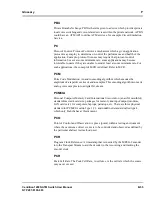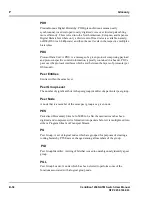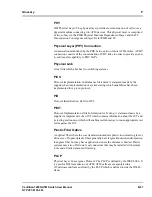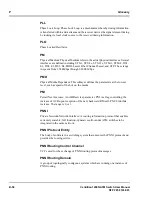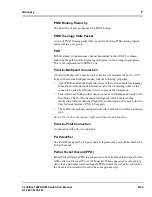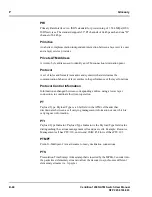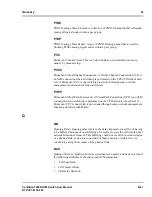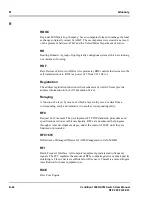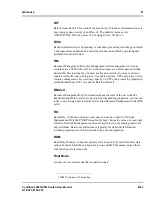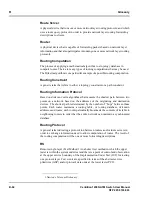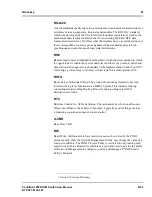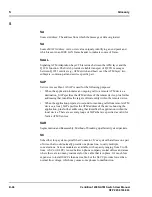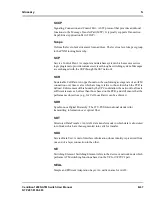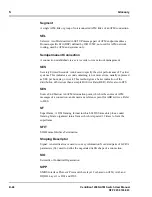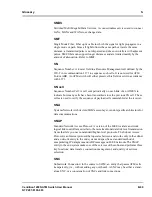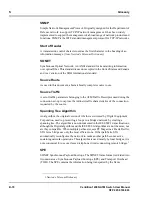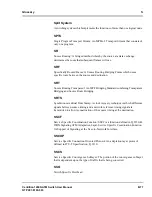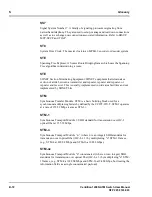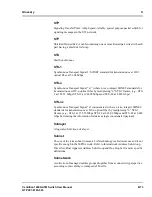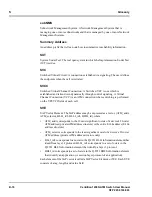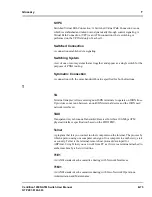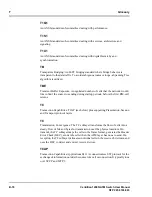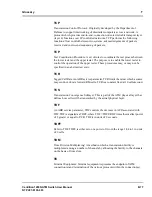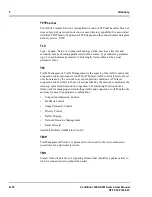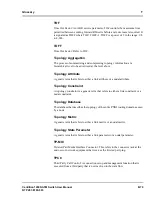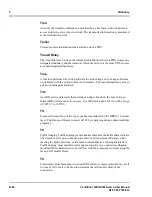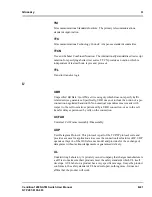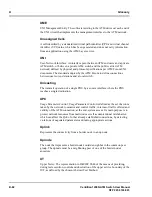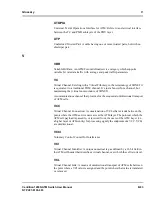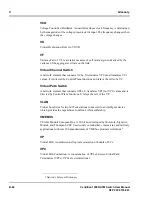
Glossary
S
Centillion 1200N ATM Switch User Manual
B-69
NTP 297-8103-903
SMDS
Switched Multi-Megabit Data Services: A connectionless service used to connect
LANs, MANs and WANs to exchange data.
SMF
Single Mode Fiber: Fiber optic cable in which the signal or light propagates in a
single mode or path. Since all light follows the same path or travels the same
distance, a transmitted pulse is not dispersed and does not interfere with adjacent
pulses. SMF fibers can support longer distances and are limited mainly by the
amount of attenuation. Refer to MMF.
SN
Sequence Number: A 4 octet field in a Resource Management cell defined by the
ITU-T in recommendation I.371 to sequence such cells. It is not used for ATM
Forum ABR. An ATM switch will either preserve this field or set it in accordance
with I.371.
SN cell
Sequence Number Cell: A cell sent periodically on each link of an AIMUX to
indicate how many cells have been transmitted since the previous SN cell. These
cells are used to verify the sequence of payload cells reassembled at the receiver.
SNA
Systems Network Architecture: IBM's seven layer, vendor specific architecture for
data communications
SNAP
Standard Network Access Protocol: A version of the IEEE local area network
logical link control frame similar to the more traditional data link level transmission
frame that lets you use nonstandard higher-level protocols. The Subnet Access
Protocol is an Internet protocol that operates between a network entity in the subnet
and a network entity in the end system and specifies a standard method of
encapsulating IP datagrams and ARP messages on IEEE networks.The SNAP
entity in the end system makes use of the services of the subnet and performs three
key functions: data transfer, connection management, and quality of services
selection.
SNC
Subnetwork Connection: In the context of ATM, an entity that passes ATM cells
transparently, (i.e., without adding any overhead). A SNC may be either a stand-
alone SNC, or a concatenation of SNCs and link connections.

